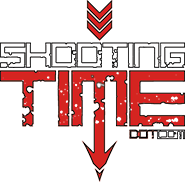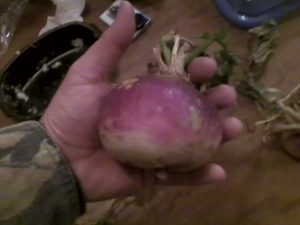By Jason Kaatz
By definition, food plots are crops that are planted and not harvested so they can become a food source for wildlife. If done correctly, they can increase the success of your hunting season.
How do you make a food plot? What kinds of food plot seed should I use for deer? When should I plant my food plots? Let me share my experiences of food plots with you.
The trials and tribulations of planting food plots for deer
Food plots are a love hate relationship for me. Food plots have been very difficult at times for me. I can remember back in the early and mid 90’s going out on family land with my dad and planting sunflowers for mourning doves. We worked for hours in the spring, only to have none of them come up. Our second year of food plot planting wasn’t much better, just resulting in 50% growth.
Other food plot trials went similar to worse. Planting upland food plots was initially a very trying process, often times resulting in a poor yield and many weeds. Many people would throw the towel in, but, with failure comes knowledge; and with knowledge comes better grown and better planned food plots.
Facts you should know about food plots
- They are hard work.
- You are going to sometimes fail.
- Don’t expect them to look like they do on TV.
- You don’t have to use heavy equipment.
- Round up is your friend.
- Learn from your mistakes.
Spring food plots for deer
From my experiences, I can say that I am also not a fan of spring plots. This is not because I don’t like them or think they are a bad idea. In my particular hunting area, spring plots get wiped out by floods almost every year. After 2 years of having to plant the same food plots twice, we decided that maybe we should not keep doing the same thing and expecting a different result (check definition of insanity). The one method that I have had some success with is frost plotting.
Frost plotting requires a bare ground environment and is an excellent way to cover a large area. Frost plotting is a very easy way to plant a food plot but is not for planting annuals. Clover is an excellent seed to use in this application.
The required elements for frost plotting are bare dirt, spring temps that range from below freezing to above freezing during the day, and a broadcast seeder.
If you have the required elements, just spread the seeds on the dirt and leave it alone; mother nature will take care of the rest. The expansion and contraction of the freezing and thawing dirt will work the seeds to a suitable growing depth. Spring showers will supply ample water in most cases and your food plot should grow.
Late summer and fall food plots for deer
I am a fan of late summer and fall food plots. This does however mean that we are normally planting in late June, through August which are the hottest months of the year here in northern Illinois. When planting food plots in later summer and early fall I highly suggest planting your food plot seeds just before a rain storm is scheduled to move into the area. This will help your food plots to take root.
Late summer and fall food plot planting strategies
Before you even go to open a bag of seeds you need to do your homework. The following is a basic timeline for planting a food plot:
- You need to select your food plot area.
- You need to prep that area for seeding.
- You need to select the correct food plot seed for the area.
- Check the local forecast for the best time to plant your food plot.
- Plant your food plot.
This is a fairly straight forward process? Right? Well it seems not, I have talked to a lot of people who get confused and frustrated and end up quitting on food plots. So I will break it down in the way that I go about food plots.
Selecting your food plot area
I think of this in the same way as I would if I was trying to trap a coyote or a raccoon; you don’t put the trap where the animal doesn’t frequent and expect the bait to bring them there. You should instead set the trap where the animals travel and use the food plot to seal the deal.
If the deer are always on the field edge don’t put the food plot 400 yards away where you want to put your stand. Put your stand where the deer already want to be and make the area more inviting with a food plot. Now, can you change the habits of deer with food plots and adjust where they travel? Yes you can, however, if you put a food plot where the deer normally do not travel, do not be surprised if they don’t find it.
How to prep an area for a food plot
So now we have selected a huntable area where the deer normally travel and/or feed. Our next step is to make the area ready to plant. The area for a food plot can vary from in the middle of the woods to out in an open field. Beware of choosing an area that is bare, with very little existing plant growth. There most definitely is a reason why there isn’t something already growing there and that area may be a poor choice for a food plot.
What do plants need to grow? Water and light are the most important. Normally looking up will reveal why nothing is growing in a given area. If the area that you are wanting to plant has a lack of light then you may need to use a chainsaw to make room for the sun. I for one don’t care if I am cutting down a black walnut tree that is worth a few hundred to thousands of dollars; if it needs to go then it has to go.
Once you have the required light for the area, you can focus on clearing the floor. In the case of an open fields, trees are normally not an issue. Open field prepping normally is just a matter of clearing the ground of weeds. To clear a large area of weeds, I suggest investing in a pump sprayer and some Roundup. If you have large weeds in your food plot area, use a weed whacker or brush hog to clear them. Once the bulk of the weeds are removed, you can then spray a liberal amount of Roundup to complete the process. After spraying the Roundup, give the area a couple of weeks before proceeding to the next step.
Selecting food plot seed
While you are waiting for the Roundup to do its job, you need to start deciding what kind of seed you are going to be planting in the area.
Several things need to be taken into consideration:
- What kind of equipment do you have to plant your food plot.
- Do you have an ATV and a disc?
- Do you only have hand tools?
- How much sunlight is going to be getting to the area?
Many seeds require a well cultivated seed bed, while some seeds need a specific planting depth. Research what has worked well for others in your area and make your selection.
Here is a list of some of the different food plot seeds for deer that have worked for me:
- Biologic- Hot Spot
- Biologic-Green Patch
- Biologic- Last Bite
- Biologic Clover Plus
- Fridged Forage-Big and Beasty Brassicas
- Fridged Forage-Autumn quick plot
- Fridged Forage-Wild Game Buffett
- Evolved Harvest-Throw and grow extreme
Planting your food plot
After selecting your food plot seeds, clearing the weeds, and making sure you have rain in the forecast, its time to plant your food plot. If you have an atv and a disk, you can disk the area, broadcast the seed, drag the area and your planting will be done.
If you are like me and only have a rake and a bunch of will power, this is when the work starts. I have 2 methods for this that seem to work equally.
First manual planting method
If you have bare ground to work with, this will normally require more work. Bare ground will need to roughed up the ground a lot to make sure the seeds get good ground contact. I have found the more that you can do to get the seeds into the soil, the better. First you want to rake/cultivate the soil to break it up so the seeds can sink in. Next, you will broadcast the seed evenly according to the recommendations on the food plot seed packaging. The final step is to use the rake to cover the seeds with the soil. The back of a standard steel rake works well for dragging loose soil and covering the seeds.
Second manual planting method
The second type of food plot planting is one that I have grown to love. This method is used for a plot that is going in an area of switch blade grass. My tactics for this were born out of exhaustion, laziness and 100+ degree temps.
The first step is to spray and kill the switch grass. After the switch blade grass dies, it for the most part, stays upright. Next, just seed the area without removing the dead switch grass. After seeding the areas, we will then roll the area. To roll the area, you can use a roller of some sort, you can walk over the area repeatedly with a friend or two, or you can use a vehicle to run the area over. Planting switch grass areas works well. This is a radish I planted using this method.
I hope my honesty and the lessons I’ve learn from my past will help you in planting successful food plots for deer. Just like with anything, you have to have patience. If at first you fail, try, try again. Just don’t forget to switch something up a little. After some experience, I have no doubt that you too will discover your green thumb. For some more information, click here. Good luck!

